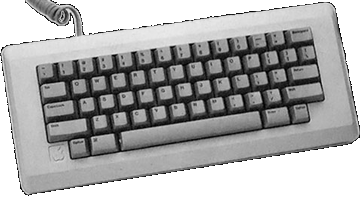Company History: 1985-1993
NOTE: The Company History section is no longer actively maintained, though it is accurate through 2004. For a more detailed (and current) history of the company, can be found at Wikipedia

Sculley became the de facto head of Apple in May 1985. Over the next few months, Apple was forced to lay off a fifth of its work force, some 1,200 employees. The company also posted its first quarterly loss. All this, and the resignation of Jobs, served to erode confidence in Sculley's abilities as CEO of Apple.
At the same time, Sculley became locked in a battle with Microsoft's Bill Gates over the introduction of Windows 1.0, which had many similarities to the Mac GUI. Gates finally agreed to sign a statement to the effect that Microsoft would not use Mac technology in Windows 1.0--it said nothing of future versions of Windows, and Gates' lawyers made sure it was airtight. Apple had effectively lost exclusive rights to its interface design. This would prove to be an important document in future lawsuits between Apple and Microsoft, involving the Windows interface.
What brought Mac out of the hole were the twin introductions of the LaserWriter, the first affordable PostScript laser printer for the Mac, and PageMaker, one of the first Desktop Publishing programs ever. These two in tandem made the Mac an ideal solution for inexpensive publishing, and the Mac became an overnight success, again.
In 1987, Apple introduced the Mac II. Built with expandablity in mind, the Mac II made the Macintosh line a viable, powerful family of computers. Apple was a "Wall Street darling" again, (Rolling Stone) shipping 50,000 Macs a month. It seemed in 1989 that Windows would be a flop, and the Mac would be riding high for the next decade.
It didn't. By 1990 the market was saturated with PC-clones of every conceivable configuration, and Apple was the only company selling Macs. In late May, Microsoft rolled out Windows 3.0, which could run on virtually all of the PC-clones in the world. Apple was in trouble.
Apple's top idea for a solution was to license the Mac OS. While many believed it would erode the quality of the Mac, or that it would create even more competition, it was becoming clear that Apple could not provide both the hardware and the software to drive an industry. There was also talk of porting the OS to run on Intel-based machines.
It was Michael Spindler, Apple's new COO, who nixed the idea, saying that it was "too late to license."
In late 1991, Apple released its first generation of PowerBooks, which were an instant success. Work was being done on a new type of computer, the Personal Digital Assistant (PDA), which Apple called the Newton. Sculley took an immediate interest in the Newton, and drove the Newton to completion in August 1993. The first generation of Newtons had extremely poor hand-writing recognition (2.1 MB), and did not sell particularly well.
Sculley began to lose interest in the day to day operations of Apple. Eventually the Apple Board of Directors decided they'd had enough. In June of 1993, They relieved Sculley of his position as CEO, putting Spindler in the big chair. Sculley remained with the company as chairman for several months and then resigned.
